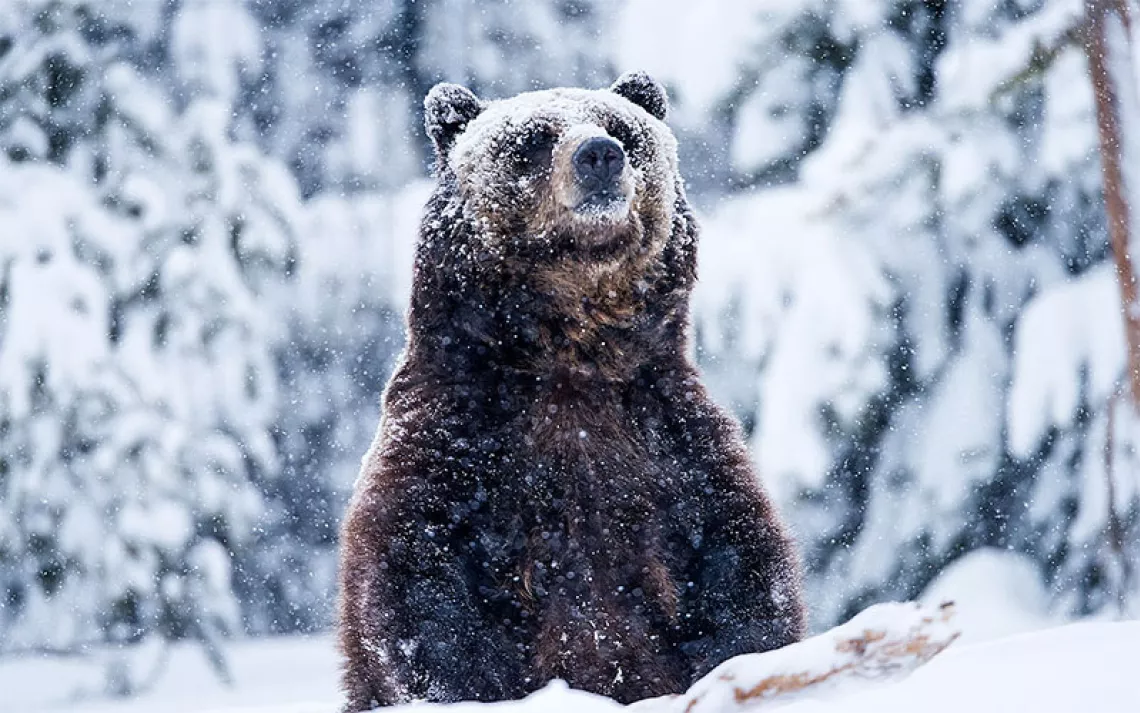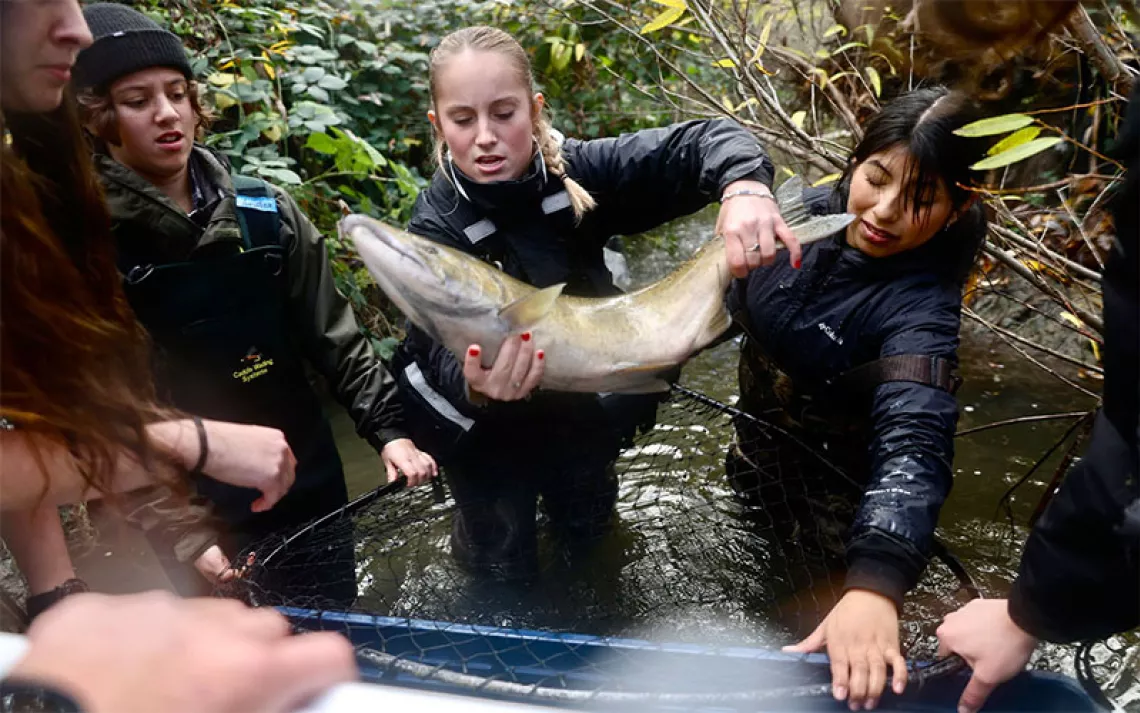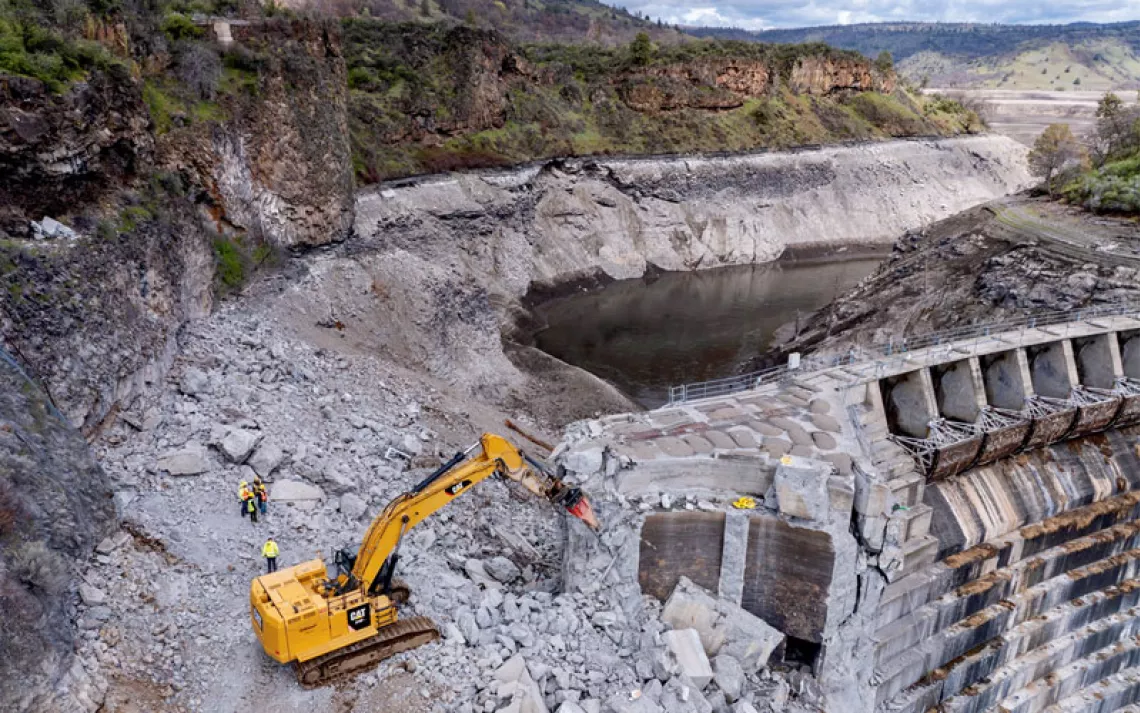Proposed Tucson Copper Mine Threatens Habitat for Endangered Jaguars and Ocelots
Rosemont Mine would obliterate prime territory and migration corridors

Photo by ca2hill/iStock
Update: On July 31, 2019, a federal judge delivered a surprising victory to conservation organizations and Native American nations and ruled that the permit for the controversial Rosemont copper mine outside of Tucson was invalid.
Canadian mining corporation Hudbay Minerals’ bulldozers were set to begin excavating the desert site when federal district court judge James Soto invalidated the permit. In his decision, Soto wrote that the US Forest Service “abdicated its duty to protect the Coronado National Forest” by failing to consider the exact status of the company’s mining claims. The judge’s rulings hinges on the interpretation of technical language in the 1872 General Mining Act. Judge Soto found that the Forest Service had mistakenly assumed that the Rosemont claim was valid, and chided the agency for following a “historically low bar” for validating the mining company’s claim. The ruling may have national implications beyond this one Arizona dispute.
Environmental organizations that have fought a years-long legal battle to stop the Rosemont mine—which, if completed, would be the third largest in the United States—were thrilled with the decision. “This is a crucial victory for jaguars and other wildlife that call the Santa Rita [mountains] home,” Randy Serraglio of the Center for Biological Diversity told The Arizona Republic. The Sierra Club’s Grand Canyon Chapter is among the plaintiffs suing to stop the mine.
Hudbay Minerals executives said they will continue to press for the copper mine and pledged they would appeal the case to the Ninth Circuit Court of Appeals.
For the male jaguar that eventually became known as El Jefe, the Santa Rita Mountains south of Tucson, Arizona was home. Between roughly 2012 and 2015, El Jefe—a.k.a the Santa Rita male—roamed the oak- and piñon-studded mountain range, successfully hunting prey like deer and javelina and unsuccessfully searching for a mate. Sometimes the animal would follow the twists and turns of Cienega Creek eastward toward the Whetstone Mountains, another ideal landscape for the only species of roaring cat native to the Americas. Biologists know all of this because they captured photographic evidence of the jaguar’s presence: During a three year period, researchers at the University of Arizona gathered more than 100 photographs and videos of the Santa Rita male prowling the area until, in late 2015, El Jefe disappeared, presumably headed back to Mexico in search of a female.
While conservationists and biologists view the high desert woodlands of the Santa Rita foothills as an ecologically intact landscape that provides essential habitat for jaguars, ocelots, and other endangered species, a Canadian mining company sees something else there: the repository of tens of millions of tons of copper, molybdenum, and silver worth billions of dollars.
Hudbay Minerals, a Toronto-based multinational, is in the last-to-final stages of getting approval from federal agencies to blast a mile-wide, 3,000-feet-deep open pit mine on the eastern slopes of the Santa Ritas. If the Rosemont Mine were to be approved and then survive legal challenges from environmental organizations it would, conservationists say, obliterate one of the most important wildlife areas in southern Arizona.
“When I think of the Coronado National Forest and the Santa Rita Mountains, I think of a picnic in the shade of one of the large oak trees, the springs that sustain a diversity of plants and animals, a nature walk looking for wildlife tracks, and the dream of jaguars in their midst,” Sandy Bahr, director of the Sierra Club’s Grand Canyon Chapter, wrote in an email last week when asked about the Rosemont proposal. “ My vision does not include a mile-wide, open-pit copper mine that will literally drain this area of its lifeblood by sucking up groundwater, harming water quality, and filling in desert washes, among a myriad of other impacts. We must stop this mine.”
Bahr and other Arizona conservationists have been fighting a proposed open pit mine in the Santa Ritas for some 20 years. In the late 1990s, mining giant Asarco was laying plans for a copper mine there—until the company went bankrupt in the midst of a commodity market price manipulation scandal. The Rosemont mining claim bounced among several other companies unti, in 2014, Hudbay acquired the mineral rights to the area and accelerated efforts to excavate the landscape.
For a while, environmental groups were cautiously optimistic that they would defeat the mine proposal as a drumbeat of government reports expressed concerns about the project. In November 2013, the Environmental Protection Agency recommended against issuing a permit for the mine. The disruption of some 5,000 acres of land could, the EPA warned, “result in the fragmentation of an intact natural hydrological landscape”—that is, the drying up of seeps, springs, and creeks. In April 2014, the discovery of an ocelot near the proposed mine site—and, later, the presence of the Santa Rita jaguar—raised new concerns about the impact on endangered species, forcing additional studies by the US Fish and Wildlife Service. In July 2016, the US Army Corps of Engineers regional office recommended denying an essential permit for the open-pit mine.
Hudbay’s plans have also encountered resistance from the area’s political leadership. The Pima County Board of Supervisors is on the record opposing the mine, and Arizona Congressman Raul Grijalva, the ranking member of the House Natural Resources Committee, is a staunch opponent.
But since Donald Trump’s election as president, the political calculus has changed, and now mine opponents are fearful that the new administration will push federal agencies to greenlight the mine, as it has other controversial projects like the Keystone XL and Dakota Access pipelines. In June, the US Forest Service issued its final record of decision on the mine and gave its permission for the mine to go forward.
Before Hudbay can begin to bring in the bulldozers, however, the company still needs one more approval from the US Army Corps of Engineers, which has to grant a special permit allowing for the dredging and filling of wetlands, which is normally prohibited under the Clean Water Act. But the Army Corps has been silent about whether or when it will issue such a permit. Last week an Army Corps spokesperson told Sierra, “We are still reviewing the information. There is still no timeline on a decision.”
As they await a final decision from the Army Corps, conservation groups are preparing litigation to challenge the mine on several fronts. In early August, four organizations—Save the Scenic Santa Ritas, the Center for Biological Diversity, Arizona Mining Reform Coalition, and the Grand Canyon Chapter of the Sierra Club—filed an intent to sue the US Forest Service over its record of decision. The Forest Service’s final report, the groups claim, violates provisions of the Clean Water Act.
“It’s tied to the de-watering of the streams, because they [Hudbay] are going to have to pump out the aquifer for decades, and that will lower the stream level in a critical wildlife area,” said Roger Flynn, managing attorney at the Western Mining Action Project, which is representing the four environmental groups. “The mine is going to do tremendous damage to these water-dependent ecosystems, and of course the wildlife and fish that depend on them.”
Separately, the Center for Biological Diversity has also filed an intent to sue the federal government over what it says are violations of the Endangered Species Act. In addition to the jaguar and ocelot, the Santa Rita foothills and the Cienega Creek watershed are home to endangered species such as the Chiricahua leopard frog and the lesser long-nosed bat. “There are like a dozen different species at risk, because the biodiversity in the Santa Ritas is so high,” Randy Serraglio, the Southwest conservation advocate for the CBD, said. “The Fish and Wildlife Service is another egregious angle in all of this. Four different times their own scientists recommended against this [mine], because they said there was no way it was compatible with jaguar recovery. And then they [the agency] turned around and said they changed their mind. It’s obviously been changed by higher ups for political reasons.”
Hudbay Minerals did not respond to repeated requests for comment from Sierra. But in statements to the Arizona Daily Star (which has done dogged reporting on the subject for years), company officials have expressed confidence that they will be able to mitigate the environmental impacts of their operations. After the Forest Service released its decision in June, a company vice president told the Star: “The Final Record of Decision was granted based on years of public input allowing rigorous study and analysis of fact and science … a thorough process involving 17 co-operating agencies at various levels of government, 16 hearings, over 1,000 studies, and 245 days of public comment resulting in more than 36,000 comments.” The company says the mine would create 400 permanent jobs and could produce up to 11 percent of the US copper supply.
Environmentalists are skeptical of Hudbay’s claims that the company can mitigate the destruction that will inevitably accompany a mile-wide hole covering an estimated 5,000 acres of public land with mining waste. “Places like the Rosemont Valley and the Santa Ritas are irreplaceable, and once the mining co has their way with them, they are lost, they are irretrievable,” Serraglio said. “There is no way to ever mitigate the destruction that will be wrought in that place. It will be lost forever.”
And for the jaguars that continue to make their way up from Mexico to return to their historical territory in the Southwest, the development of the Rosemont Mine would mean they would have one fewer place in which to make a home.
 The Magazine of The Sierra Club
The Magazine of The Sierra Club



